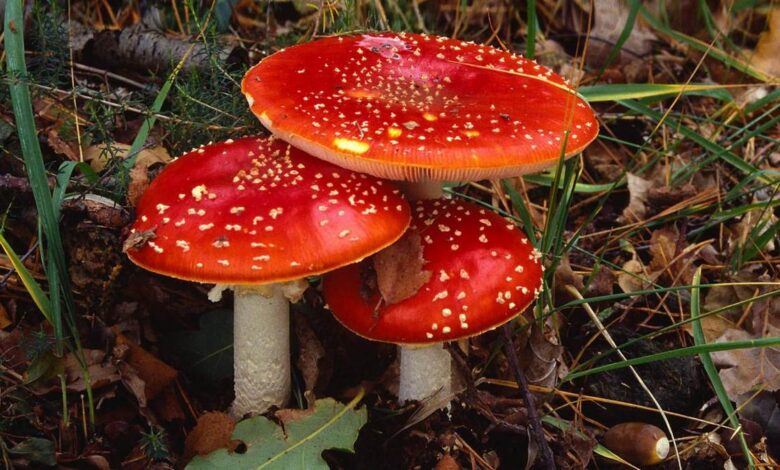The Medicinal Potential of Amanita Muscaria: Traditional and Contemporary Uses

Amanita muscaria, commonly known as the fly agaric mushroom, is an iconic species renowned for its distinctive red cap with white spots. Despite its reputation as a toxic and psychoactive fungus, Amanita muscaria has a rich history of medicinal use across various cultures. This article delves into the traditional and contemporary medicinal applications of Amanita muscaria, shedding light on its potential benefits and the need for further scientific exploration.
Historical Context of Amanita Muscaria
The use of Amanita muscaria as a medicinal mushroom dates back centuries, with records indicating its use in Siberian, European, and Asian traditional medicine practices. In Siberia, shamans utilized it for its psychoactive properties to induce visions and spiritual experiences, believed to facilitate healing and communication with the spiritual world. Similarly, in Eastern Europe, Amanita muscaria was used to treat conditions such as rheumatism and as a remedy for physical exhaustion.
Medicinal Compounds and Effects of Amanita Muscaria
Amanita muscaria contains several bioactive compounds, including muscimol and ibotenic acid, which are responsible for its psychoactive effects. Muscimol acts on the brain’s GABA receptors, leading to altered states of consciousness. However, beyond its psychoactive properties, these compounds have been studied for their potential therapeutic effects. Research has suggested that muscimol may have analgesic (pain-relieving) properties, could act as an anti-inflammatory agent, and may possess antiviral and antibacterial activity.
Contemporary Research and Uses
In recent years, there has been a resurgence of interest in the medicinal potential of Amanita muscaria, with researchers exploring its applications in modern medicine. Preliminary studies have investigated its efficacy in treating neurological conditions, such as epilepsy and anxiety, due to its GABAergic activity. Moreover, its potential as an analgesic makes it a subject of interest for pain management research, particularly in chronic conditions where conventional treatments may be ineffective or have undesirable side effects.
Safety and Legality
It is crucial to note that Amanita muscaria is considered toxic and can cause severe poisoning if consumed improperly. The psychoactive components can induce a range of effects, from mild euphoria to intense hallucinations and confusion. Therefore, any medicinal use should only be pursued under the guidance of professionals with expertise in toxicology and traditional medicine practices. For those interested in exploring Amanita muscaria further, whether for educational purposes or scientific research, Mycoteria.com offers a platform where you can buy Amanita muscaria. This resource is dedicated to providing high-quality specimens for those looking to study its properties, understand its effects, or explore its potential medicinal uses within a safe and legal framework. Remember, the purchase and use of Amanita muscaria should always be approached with caution and responsibility, keeping in mind its potent effects and legal status in your region.
Additionally, the legal status of Amanita muscaria varies by region, with some countries restricting its possession, sale, and use. This legal landscape further complicates its study and medicinal application, highlighting the need for comprehensive research to understand its pharmacology, toxicology, and therapeutic potential fully.
The medicinal use of Amanita muscaria is a field that embodies the intersection of traditional knowledge and modern scientific inquiry. While its historical applications provide a foundation for understanding its potential, rigorous scientific research is essential to validate its efficacy and safety as a medicinal agent. As interest in natural and alternative therapies grows, Amanita muscaria represents a fascinating area of study that may offer new insights into treating various health conditions. However, caution and respect for its potency and legal status must guide its exploration in the medicinal context.
Does Amanita Muscaria Make You Trip?
Yes, Amanita muscaria can induce psychoactive effects, including alterations in perception, mood, and consciousness, often referred to as “tripping.” These effects are primarily due to compounds like muscimol and ibotenic acid, which affect the brain’s neurotransmitters. However, the intensity and nature of the experience can vary widely among individuals, influenced by factors such as dosage, individual sensitivity, and the specific mushroom strain.
What Are the Benefits of Amanita Muscaria?
Traditionally, Amanita muscaria has been used in various cultures for its medicinal properties. It is believed to have analgesic (pain-relieving), anti-inflammatory, and antibacterial effects. Some contemporary research also explores its potential in treating neurological conditions like epilepsy and anxiety, due to its action on GABA receptors. However, these benefits are subject to ongoing research, and more scientific evidence is needed to fully understand its therapeutic potential.
What Are the Effects of Amanita Muscaria on Humans?
The effects of Amanita muscaria on humans can range from mild to severe and can include both physical and psychoactive experiences. Physically, ingestion can lead to symptoms like nausea, dizziness, and muscle twitching. Psychoactively, it can cause altered states of consciousness, visual and auditory hallucinations, and changes in perception of time and space. The effects are dose-dependent and can also vary based on the individual’s physiology and the mushroom’s preparation. It’s crucial to note that while some find these effects desirable, they can also be unpredictable and potentially dangerous.